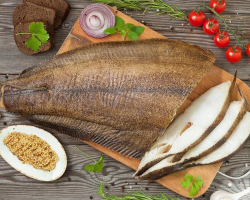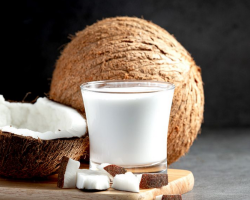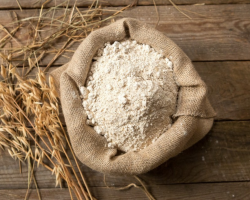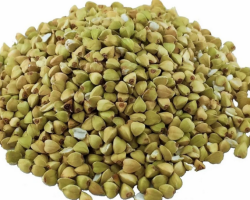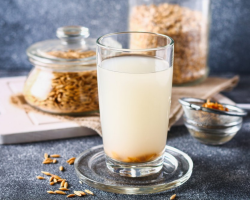Everything that comes to us from Tibet is useful by default. Let's find out if this applies to the diet.
Content
Tibetan diet It helps to discard excess weight, rejuvenate the body, removal of toxins, toxins, accelerate metabolism, increase working capacity, endurance throughout the day.
Everyone has long known that Tibetan monks live long enough and at the same time lead a modest, restrained lifestyle. They achieve longevity thanks to a special diet, the balance of nutrients, and mental balance.
General rules of the Tibetan diet
To lose extra pounds, accelerate metabolism with the help of a Tibetan diet, you should adhere to the basic rules:
- Portations should be small.
- The basis of the diet is exclusively fresh products with minimal heat treatment.
- For monks, food is a special ritual that requires calm. Food should be chewed thoroughly many times, receiving liquid gruel in the mouth.
- Each meal should be accompanied by easy music, which sets up the body and body in a calm way.
- Squirrels and carbohydrates cannot be combined together.

The food of Tibetan monks is separate. Different dishes can not be mixed so that the body of fermentation and decay of food does not occur in the body. This process does not only affect well -being, but also on a spiritual state.
- Allowed products: hard cheese, chicken eggs, butter.
Followers of such a diet share products, even using eggs. They do not eat yolk and protein together.
- Throughout the diet, you should drink a raw egg every morning after waking up or during the day after eating after 30 minutes. For those who do not like to eat raw eggs, you can replace them with a plower or software with an egg.
- You can not do a snack during the day.
- Eat only according to a special scheme.
At first, food should go, which is quickly digested, and at the end the one that is digested the longest. Drink a lot of liquids to speed up the digestive process.
Food intake scheme for the Tibetan diet:
- Fresh vegetables, as well as fruits, broths.
- Seafood.
- Dairy.
- Porridge.

- Water must be drunk up to 2 liters per day. You can replace it with partially green tea, a decoction of herbs. Drink water should be used before meals for about 30 minutes or after eating after about 2 hours.
- The last meal is 2 hours before bedtime.
- Diet, as well as physical activity should be combined.
- Separate "dishes" are considered the following products:
- Apples
- Bananas
- Melon
- Sweet cherry
- Strawberry

Each of them should be consumed after or even before meals, a temporary interval for 2 hours.
- In order for the body to receive a sufficient number of minerals and vitamins to take a multivitamin complex.
- After you have finished sitting on a diet, you must gradually introduce meat.
Forbidden products at the Tibetan diet:
- Alcoholic drinks (lead to a slowdown in the withdrawal of toxins from the body and slow weight loss).
- Meat, low -fat fish.
- Semi-finished products and fast food.
- Sweet, pastries, flour, yeast bread.
Tibetan diet: benefit and harm
What are the pluses of the diet:
- Metabolism is normalized.
- There is no feeling of hunger, as a result of which the diet is easily tolerated.
- The weight is gradually lost up to 5 kg.
- The level of cholesterol in the blood decreases.
- Salts that cause crunch in the bones are excreted.
- The skin is cleaned.

Minuses:
- Sometimes there is dizziness, a breakdown. If this happens, you should include more fresh fruits or freshly squeezed juices in the diet. If after this health continues to deteriorate, you should consult a doctor and stop a diet.
- Rice is a product that causes constipation.
Tibetan diet: menu
The basic principle of a weekly diet is completely abandoned by meat and any products that contain it. The Tibetan diet is also compared with the Milk-Vegetarian.
But there are also other options:
- On cereals
- On herbs
All these variations serve only as an addition to the classical version, which was invented by the monks of Tibet.
Classic version of the Tibetan diet
The diet, which is designed for 7 days, consists of vegetables, fresh fruits, dairy, and cereal products. All portions are 250 g, unless otherwise indicated.
1-y day:
- Breakfast. 1 glass of milk.
- Lunch. Oatmeal.
- Dinner. Rice, thermally treated vegetables, each dish.
- Afternoon snack. One small apple.
- Dinner. Boiled asparagus beans.

2nd day:
- Breakfast. 1 glass of milk.
- Lunch. Oatmeal.
- Dinner. Low -fat fish, broccoli, all steam.
- Afternoon snack. Fresh fruit salad.
- Dinner. A salad made from fresh tomatoes.
3rd day:
- Breakfast. Fresh milk .
- Lunch. The scary of 3 eggs is a couple.
- Dinner. Light vegetable soup.
- Afternoon snack. Whole grain sandwiches with hard cheese and oil.
- Dinner. Boiled asparagus beans, carrots, grated on a fine grater.
4th day:
- Breakfast. Tea with a spoonful of honey.
- Lunch. Boiled rice.
- Dinner. Light soup with noodles - 350 ml.
- Afternoon snack. Steam vegetables - 350 g.
- We have dinner Loof cottage cheese.

For a couple
5th day:
- Breakfast. Fresh milk.
- Lunch. Light salad with feta, sesame seeds, salad leaves, with a gas station of good olive oil - 350 g.
- We have lunch light tomato soup
- Afternoon snack. Fresh salad - 350 g.
- Dinner. Low fat yogurt
6th day:
- Breakfast. Fresh milk - 250 ml.
- Lunch. Bobs - 250 g.
- Dinner. Borsch without meat - 350 ml.
- Afternoon snack. Low -fat cottage cheese - 350 g with a handful of dried apricots.
- Dinner. Fresh fruit salad - 250 g.

7th day:
- Breakfast. Tea, you can add honey.
- Lunch. Fresh fruit salad - 250 g.
- Dinner. Paragraph from vegetables - 350 g.
- Afternoon snack. Group beets with raisins - 350 g.
- Dinner. Low -fat cottage cheese - 250 g.
During the day you should drink about 2 liters of water. If hunger occurs, you need to eat a handful of nuts or any dried fruits.
Tibetan diet on rice
This is a super -powerful way of cleansing the body. Rice helps to remove toxins, toxic substances, to lower cholesterol. The rice should be exclusively brown, not polished. It should be prepared in a special way.

Classic option:
- It is necessary to take 5 jars from baby food, numbered them from one to five.
- In the first jar, pour 2 tbsp. rice, already washed. Put the refrigerator all night. In the morning it must be washed again and pour water. In the second jar we also pour 2 tbsp. rice.
- Water helps to remove starch from porridge, which contributes to the rapid removal of toxins, salts from the body.
- As a result, five jars should be filled. After 5 days, in the morning you should eat raw or boiled rice from the first jar for breakfast. And again repeat the manipulation with the first jar.
- The purification process can last up to two months.
The second option (express):
- Every morning before breakfast, you should eat rice grains not processed in the amount equal to your age.
- The duration of the diet can be from a week to a month.
The third option (sparing):
- On an empty stomach you need to drink 250 ml of water. For the first breakfast, eat rice without adding salt, sugar and oil.
- Duration: from a week to a month.
- For each of the three options, there are a rule: after rice you can neither eat nor drink.
- After such a course of purification, you should eat right.
Tibetan diet on other cereals
In the morning after waking up, you should eat about 200 g of boiled porridge without salt, as well as oil. You can take buckwheat, wheat, corn, barley porridge. To consolidate the result after the diet, you need to eat healthy food and observe the water balance.

Tibetan grass diet
A drink, infused with herbs, helps to cope with extra pounds, restore vision.
To prepare a decoction, you should take such herbs:
- Birch buds
- Chamomile
- St. John's wort
- Immortelle
Each grass should be taken 100 g. As a result, you should get 400 g of a dry mix, which will be enough for 30 days. Each time, a fresh decoction of 1 tablespoon of the mixture with the addition of 100 ml of boiling water should be made. It is insisted for 30 minutes. You can add a small spoonful of honey for taste.
Take after the main meal and dinner after 20 minutes.
The Tibetan diet is contraindicatedwomen during pregnancy and those who breastfeed, as well as people suffering from chronic liver diseases, gastrointestinal tract.


